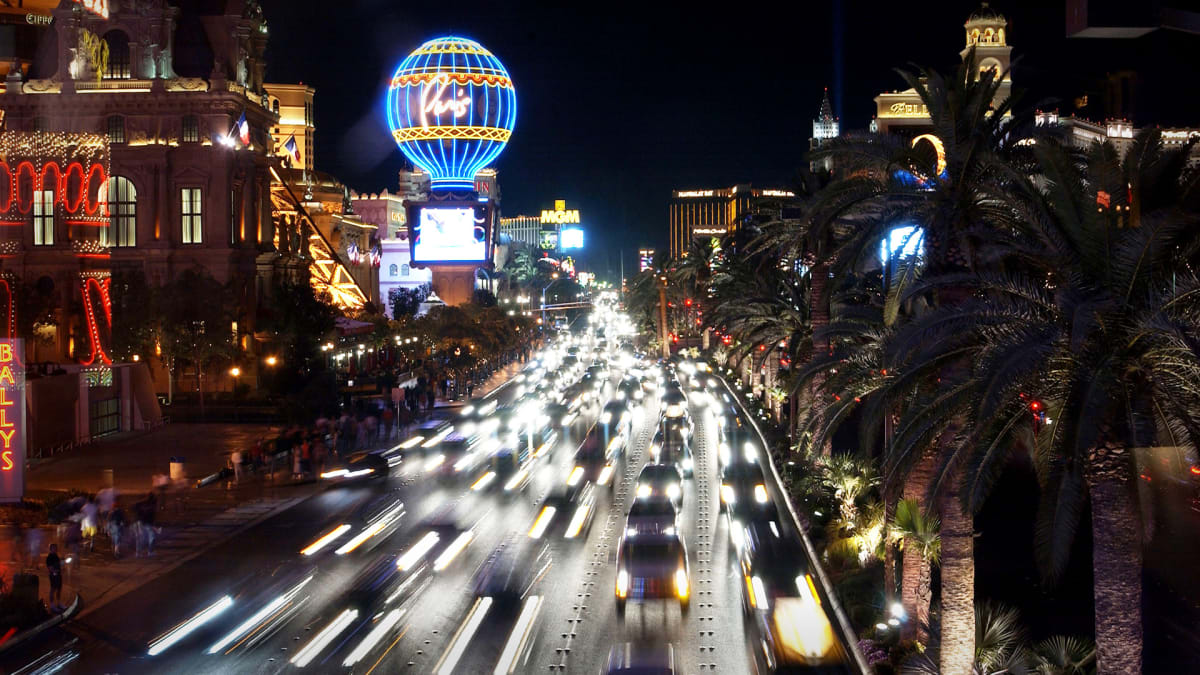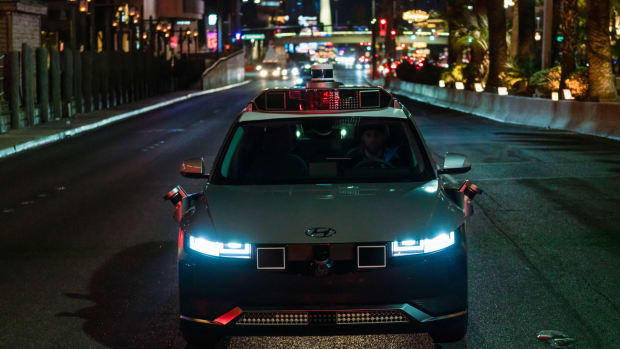
The Las Vegas Strip keeps getting more crowded.
On the South and Central Strip every parcel of land seems to have become, or is in the process of becoming, a massive tourist attraction.
Caesars Entertainment (CZR) and MGM Resorts International MGM, which dominate those parts of the Strip, keep raising the bar when it comes to creating new experiences and attractions and improving their resort casinos.
Add in all the rivals -- Tilman Fertitta and the Three Affiliated Tribes of North Dakota to name two -- that may be planning to build casinos in that same crowded area.
DON'T MISS: MGM Sells Notorious Las Vegas Strip Site, New Casino Likely
Further add in the explosive growth on the North Strip, where the massive Resorts World Casino will soon be joined by Fontainebleau Las Vegas, and you can see why a Les Vegas Strip problem -- gridlock-level traffic -- needs to be solved.
That's what Elon Musk wants to do below the city with his massive Boring Co. underground transit system, while another player has emerged with a tech-forward solution that could also help unclog the Strip.

Image Source: Motional LV
Driverless Cars Could Help Solve Traffic
While it's a big leap to think that driverless cars will replace vehicles driven by people, they could become part of the solution in tourist areas. These could operate in places like Disney World (DIS) and Las Vegas where lanes could be dedicated to them.
That's essentially what Musk is building below the city: His Boring Co. network will eventually include 18 miles of tunnels and 51 planned stations with routes going throughout the resort corridor, to Allegiant Stadium, and to Harry Reid International Airport. It's essentially a super-efficient take on a subway that will use driverless Tesla (TSLA) vehicles that will operate much more efficiently then human-piloted cars.
Above ground nothing is stopping the same thing from happening and Motional has inched a step closer to that type of solution.
The Boston company has been operating a fleet of all-electric Hyundai (HYMTF) Ioniq 5 robotaxis in Las Vegas, which have been carrying public passengers in the city since August.
Now, the company has expanded its offerings from offering only daytime rides into operating at night. The company has also partnered with Uber (UBER) and Lyft (LYFT) to expand its reach.
The taxis can operate without drivers -- but that's not quite what's happening now.
"The vehicles, which operate on certain routes along the famous Las Vegas Strip, currently have vehicle operators in the front seats for safety purposes, but operate in autonomous mode. And riders are enjoying the experience, with over 90% of passengers giving their ride a five-star rating," Motional shared.
Boring Co. uses actual drivers in the Teslas that are part of the Las Vegas Hyperloop.
Small Steps Toward a Driverless Las Vegas
While Motional has done nothing to solve Las Vegas's traffic woes yet, it's easy to see how the city could use dedicated transit lanes as part of a solution.
That's something Hartford, Conn., has actually done with bus routes because it was cheaper to add designated roads for mass transit than it was to build light rail.
Las Vegas could conceivably enhance what Musk has been building underground using this strategy once Motional (and perhaps other players) perfect the safety of their technology.
The driverless taxi company clearly has made this a focus of its Las Vegas tests, and it's why the company started with daytime rides before moving into the night.
“As excited as we are to introduce our robotaxis to the public, safety is paramount,” said Motional Vice President Akshay Jaising.
Motional’s robotaxis use a "sensor suite that includes more than 30 cameras, radars, and lidars," a Motional senior manager, Jared Miles, said.
"The vehicles benefit from having multiple sensing modalities; high-resolution cameras, for example, differentiate between objects in the vehicle's path and background structures. Other sensors perform well in low or variable lighting conditions. Radars use radio waves to 'see' objects through fog, smoke, and dust."
So far, the results have not been different at night compared with daylight hours.
“We were not seeing increases in swerving, hard stops, or other examples of factors that create uncomfortable rides,” Miles said. “It means our tech is ready for this next challenge.”
Related Links:







